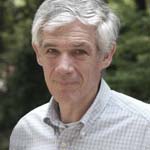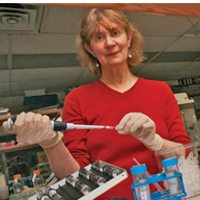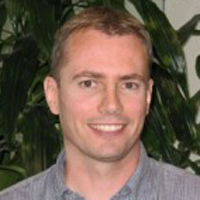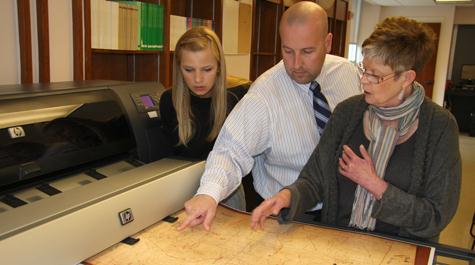2013 Creative Adaptation awards announced
In November 2011, Provost Michael R. Halleran sent a memo to faculty announcing the establishment of the Creative Adaptation Fund.
Now in its second year, it set aside $200,000 annually for three years “to engage and unleash the creative energy in the academic areas to develop creative adaptations that improve the quality of our educational programs either directly or indirectly, by reducing costs or generating new revenues and thereby providing funds that can be reinvested in people and programs,” Halleran wrote.
The creative adaptation initiative followed an effort that looked at business innovation and efficiencies in all administrative areas of the university. That review identified more than 60 projects, which, when fully implemented, could produce more than $2 million in annual cost savings and net new revenues.
Proposals must include a clear statement of the project and methodology, evaluation of relevant best practices, anticipated outcomes, assessment of outcomes and impact of the project when implemented on the curriculum in terms of enhanced quality of education and/or cost savings, which can then be reinvested in the College’s academic priorities. The dean and, where applicable, chair or director needs to endorse any proposal.
A committee (of faculty and administrators) reviewed and provided recommendations to Provost Halleran.
The 2013 winners are:
Self-Directed Faculty Development for eLearning
School of Education/Technology Integration Center
Investigators: Gene Roche, Carrie Cooper
 Diminished state appropriations, uncertain federal support and widening concerns about student debt are among factors pressuring even the strongest institutions to rethink their academic delivery programs. Educational technology provides a set of tools and techniques to help respond. Properly designed and delivered, e-learning can help transform academic programs, offer new levels of individualized student learning and help faculty implement new activities that have greater impact on student learning -- sometimes at lower overall cost.
Diminished state appropriations, uncertain federal support and widening concerns about student debt are among factors pressuring even the strongest institutions to rethink their academic delivery programs. Educational technology provides a set of tools and techniques to help respond. Properly designed and delivered, e-learning can help transform academic programs, offer new levels of individualized student learning and help faculty implement new activities that have greater impact on student learning -- sometimes at lower overall cost.
Some, but not all, William & Mary faculty have significant experience with modern eLearning, whose instructional models are significantly different than traditional models, offer more options for customization of student learning, are more easily documented and measured and have been at least moderately more effective. This project offers faculty the opportunity to gain knowledge and skills required to design, deliver and assess blended learning.
While the six-week community model used last year is the "gold standard" for faculty development, it requires a significant time commitment to a fixed schedule. An alternative method is to provide the same content but in smaller "chunks" that faculty members can access at times that are convenient to them. These instructional modules will be high quality, carefully designed and will provide faculty with both a pedagogical understanding of e-learning and the opportunity to develop specific skills. Each module will be self-contained and carefully focused so that they can be completed in a relatively short time.
Development and Integration of Research-Based Data Analysis Exercises into the Large Introductory Biology Lab
Department of Biology
Investigators: Margaret Saha, Mark Forsyth, Kurt Williamson, Drew LaMar and Robin Varney
 The field of biology is becoming more and more data-driven. Researchers increasingly make discoveries through examining biological processes in silico—or through computer simulation. The Medical College Admission Test (MCAT), the standardized test for admission to medical school and other health care professions, has an augmented computational component.
The field of biology is becoming more and more data-driven. Researchers increasingly make discoveries through examining biological processes in silico—or through computer simulation. The Medical College Admission Test (MCAT), the standardized test for admission to medical school and other health care professions, has an augmented computational component.
This Creative Adaptation proposal aims to increase teaching efficiency while at the same time preparing William & Mary’s biology students for the increased quantitative demands of biology-based careers and allowing them to contribute to current research projects at the university by creating more relevant, engaging and authentic lab experiences.
The proposal seeks to alter the laboratory component of William & Mary’s Introductory Biology course.
“To do so, we propose to replace selected expensive and often ineffective ‘wet labs’ with data analysis labs that employ state-of-the-art quantitative techniques that use proteomic and genomics data obtained in other research-based Biology labs,” the proposal reads.
The investigators note that 350 to 400 students, usually freshmen, take Introductory Biology each semester. Replacing selected wet-lab exercises with multi-week, online data analysis modules will save money while introducing the students to skills and concepts necessary in the field.
In addition, the assignments for the data analysis labs will be drawn from actual research in progress in the Department of Biology, thereby engaging the students early in the discovery process and promoting “an enhanced educational experience and a feeling of intellectual ownership.”
Blended Learning: A New Introductory Course and Future Possibilities in the Arts
Department of Music
Investigators: Greg Bowers, Anne Rasmussen, Katherine Preston, Kathleen DeLaurenti
 A new introductory music course at William & Mary will provide students the chance to learn in the first Tegrity classroom in the Arts & Sciences. Tegrity technology can capture audio, video and computer activity from a course and make it available online with multiple interactive features. According to its Creative Adaptation proposal, the new course will utilize e-learning techniques and technologies and be offered in a large-lecture format in Ewell Recital Hall. Currently, the largest courses in music can accommodate about 60 students. Ewell Recital Hall seats up to 140.
A new introductory music course at William & Mary will provide students the chance to learn in the first Tegrity classroom in the Arts & Sciences. Tegrity technology can capture audio, video and computer activity from a course and make it available online with multiple interactive features. According to its Creative Adaptation proposal, the new course will utilize e-learning techniques and technologies and be offered in a large-lecture format in Ewell Recital Hall. Currently, the largest courses in music can accommodate about 60 students. Ewell Recital Hall seats up to 140.
The course will be developed as a May 2013 seminar, allowing faculty members to explore new pedagogical approaches – included blended learning techniques -- that they may not have been able to implement in smaller classrooms. The Tegrity system will allow them to do things such as display and annotate musical scores.
Lectures given in the new course may also be recorded and archived so that students may review them at a later date. The music department also plans on exploring the possibility of licensing digital course content.,
The technological upgrades to the hall will also improve its use as a performance space, allowing performances by students, faculty members and guest artists to be recorded and even broadcast. These abilities will not only benefit the university’s reputation as an innovative place for the performing arts, they may also generate revenue.
Offering Geospatial Graduate Courses in the Northern Virginia and DC Area
Center for Geospatial Analysis, Office of Graduate Studies
Investigators: Stuart Hamilton, John Swaddle
 Students and faculty from many departments have learned how to use GIS—geographic information systems—to advance their own research through classes and mentoring offered by William & Mary’s highly advanced Center for Geospatial Analysis.
Students and faculty from many departments have learned how to use GIS—geographic information systems—to advance their own research through classes and mentoring offered by William & Mary’s highly advanced Center for Geospatial Analysis.
GIS is a collection of techniques that allow data to be mapped and analyzed. It’s an extremely powerful and versatile approach that is used by researchers in the natural sciences, the social sciences and the humanities.
The Hamilton/Swaddle Creative Adaptation initiative proposes exporting the GIS revolution from Williamsburg, by setting up a GIS graduate certificate program to Northern Virginia and Washington, DC, where there is a demand for trained GIS professionals. The program will be based out of William & Mary’s D.C. Office initially.
“As W&M has such strong brand recognition in Northern Virginia and DC, we do not anticipate any problems in attracting a strong applicant pool. In fact, we expect our program to be substantially over-subscribed just as the W&M in-person GIS classes are over-subscribed,” the proposal states.
The investigators note that the GIS graduate certificate program will provide a positive income stream and will strengthen the William & Mary presence in the D.C. area. The initial year of the program is expected to enroll five or six students and enrollment is expected to grow to about 25 students within a few years.
















